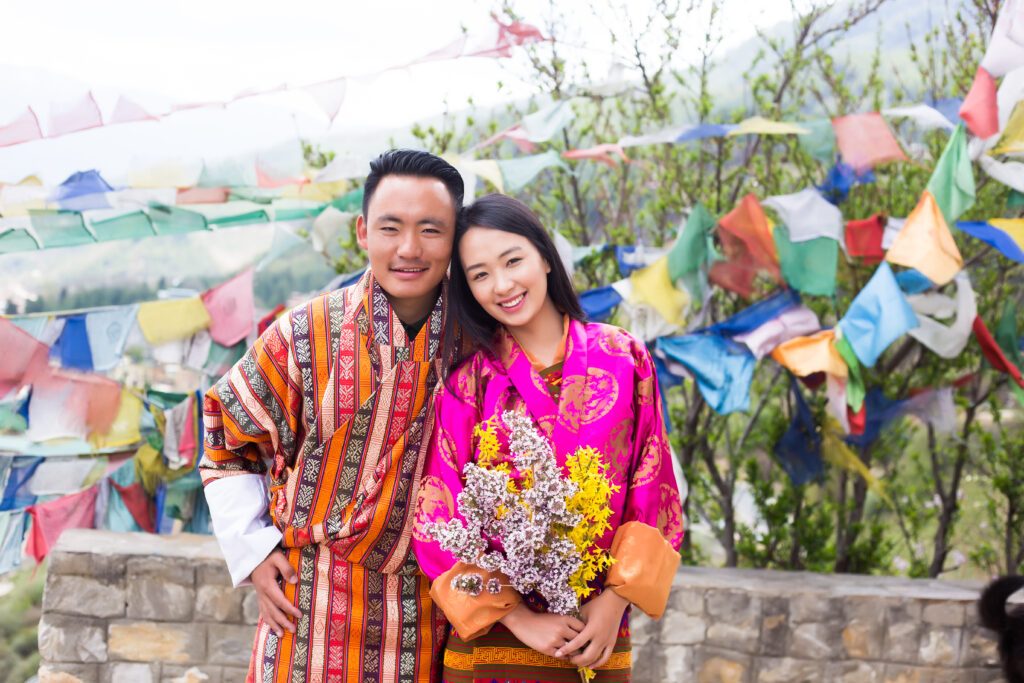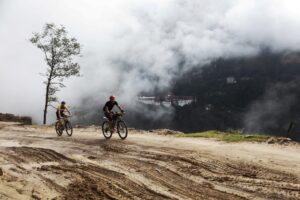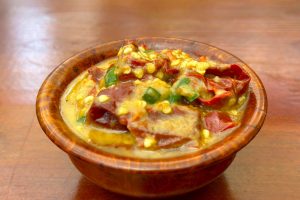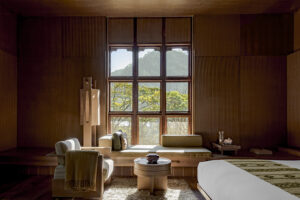
Bhutan, the renowned Himalayan kingdom, is cherished for its distinctive and well-preserved culture, rich heritage, and stunning natural landscapes. While visitors often spend time discovering the country’s legendary sites and history, the true character of Bhutan runs deeper. Beyond its iconic thousand-year-old monuments, Bhutan offers travelers one-of-a-kind experiences to truly feel the soul of the nation. Partake in beloved local traditions – don traditional Bhutanese attire, join monks in prayer at historic monasteries, or embrace rural life through horseback riding and competitive archery matches. Immerse yourself in daily cultural practices for a view of Bhutanese living you’ll find nowhere else. Make the most of your time here by creating lasting memories through hands-on participation in activities that showcase the unique lifestyle and warm, welcoming spirit defining this wonderful kingdom.
To help you make the most of your visit to Bhutan, we would like to suggest some activities that we can arrange for you.
- Wearing Bhutanese Dress – National custom
One of the easiest and best ways to first understand Bhutanese culture is to try wearing national customs.
There are different types of traditional Bhutanese dresses for men and women.
Bhutanese national customs for men
- Gho
The traditional attire for men in Bhutan is the “gho”. This garment is a one-piece outfit that is pulled up to knee-length and fastened with a belt called “kera” at the waist. This creates a large pouch around the belly area. The belt is made of a hand-woven textile and is striped, using plain cotton or wool on a card loom. It features fringes at both ends.
- Kera
Kera for men is a woven belt that is used to tighten the gho, which is an important part of Bhutanese traditional attire. Not just an accessory, its primary function is to secure the gho and enhance the overall appearance, giving a more settled look. There are a lot of designs and patterns of kera available to choose from, and men tend to select the one that best compliments their ghos. It is a small but important part of Bhutanese traditional attire.
- Kabney
Men in Bhutan are sometimes seen wearing Kabneys, which are colorful scarves worn on important occasions. This is because, unlike the gho, Kabneys are reserved for formal events, national ceremonies, and when visiting important officials. It is a tradition that is deeply ingrained in Bhutanese culture and is always adhered to with great respect.
Officials of varying ranks are assigned Kabneys of different colors. His Majesty the King – the highest authority of the country, wears a yellow Kabney, while the religious head of the country, the Je Khenpo, wears an orange Kabney. White Kabneys, on the other hand, are worn by all normal people in the country.
- Tsholam
The traditional attire for men in Bhutan is incomplete without tsholam, which are knee-length boots. The idea of these boots was brought by Zhabdrung, the unifier of Bhutan, in 1616. They were originally worn only by noblemen, particularly during festive events. But now even normal people can wear these boots.
Bhutanese national customs for women
- Kira
The “Kira” is a traditional attire worn by Bhutanese women. It is a rectangular-shaped, ankle-length robe that is wrapped around the body and tied at the waist with a wide woven belt. The robe is then fastened at the shoulders using a pair of shoulder brooches known as “koma”. To hold the koma together, a necklace-like chain called “jabtha” is used, which also serves as an attractive ornament. The kira for women is made of cotton, woven on card looms with intricate silk designs of varying colors. Elderly women usually wear the broad kera in three folds. The female kira also has fringes at both ends. The weft thread used is often thicker than the base fabric used.
- Toego
Bhutanese women wear a toego (short, loose jacket) over the kira. Toego can be made from any kind of material and be in any colour.
- Wonju
Similar to Toego, Wonju is a blouse that has a long sleeve wrapped around the body and is worn underneath the Toego. It is available in a variety of colors and fabrics, and comes in a plethora of patterns.
- Kera
Kera for women is more intricate and floral than Kera for men, which is plain and simple.
- Rachu
In Bhutan, during formal gatherings and important national events, women wear Rachu and men wear Kabney. The Rachu worn by women is more floral, complicated and elaborate as compared to the kabney for men. Wearing Rachu is a sign of respect and it complements the overall outfit. Unlike the kabney worn by men, which comes in different colors depending on the rank held by a person, Rachu remains the same for every woman. It can be either hand-woven or machine-made.
- Trying archery
Bhutan’s national sport is archery, locally called Dha, and it is the most popular sport among the Bhutanese people. If you are interested in playing this game or want to challenge anyone from the team, we always have several traditional bows, arrows, and target available in the car.
Your guide and driver would be delighted to teach you the basics of the game. So don’t hesitate to try, even if this is your first time. You may discover your new talent!
- Joining Morning and Evening Prayer at the Monasteries
In Bhutan, temples, monasteries, and shedra (monastic colleges) hold morning and evening prayers every day, except on Sundays. According to the beliefs of Buddhists, listening to mantras being recited is as beneficial as seeing the form of Buddha himself. Chanting helps internalize the teachings and cultivate mindfulness. Another reason is that they are believed to be powerful spells. The Buddhas have invested spiritual power in their mantras through prayers and aspirations. Thus, when one chants mantras, they connect with the Buddhas and participate in their spiritual blessings.
The morning Tara Prayers are held at dawn, which is considered the time when the mind is most clear and pure, according to Buddhist beliefs. You may be invited to join the lamas, or monastic teachers, on their rounds afterward, where you can interact with student monks and engage in conversations. Evening prayers are held before dusk, with a similar serene ceremony. Following this, you may have the chance to discuss spiritual topics with monks and gain a better understanding of their knowledge. By participating in these prayers, you can experience the deep cultural significance of this Bhutanese tradition.
- Hoisting Prayer Flags
The tradition of hoisting prayer flags in Bhutan can be traced back to ancient practices of venerating sacred texts. Short mantras and sutras would be inscribed on various mediums like palm leaves, cloth, and stone to spread blessings. Later, this applied to flags and has been continued until today.
Often, the five-colored dharmic elements of blue, white, red, green and yellow are featured. When the flags flutter aloft, their inscriptions are disseminated by gusts touching recipients wherever they roam. There are prayers for fortune, relief for the deceased, and overcoming obstacles.
You should hoist the flag in a clean, open area. It is important to hoist them with respect and good intentions, using environmentally friendly materials. You can consecrate the flags before or after raising them, though the mantras still hold power without ritual. Normally, the flags are left aloft as long as the prayers remain legible on the cloth. When fading or too worn, they are respectfully removed and burned.
When hoisting the flags, one often recalls the Buddha’s teachings, as they represent spreading this wisdom. Reflect on concepts like impermanence, non-violence, interdependence and liberation from suffering. Wish for the dharma to disseminate everywhere the wind transports the flags.
Taking part connects you to Bhutan’s spiritual heritage in a mindful, visually striking way. As the flags remain aloft, their mantras continue connecting all who cross their path to your benevolent intentions floating on the wind.
- Offering butter lamp
Karme – Butter lamp offerings play a crucial role in Bhutan’s daily spiritual practices. The flame of the lamp symbolizes the inner light of knowledge, which helps to eliminate the darkness of deluded thoughts and perceptions. Butter lamp offerings are also a way of accumulating merits for the benefit of all sentient beings. Moreover, they help to focus the mind and aid meditation.
It begins with washing one’s hands and wearing a mask to protect the purity of the offering. Next, make the wick from pure cotton. Then, clean the lamp basin carefully with a dedicated clean cloth or fresh moss as traditionally used.
You need to pray that ‘as one lights this butter lamp, one is lighting wisdom for the world and dispelling the darkness of the world’ when lighting the butter lamp.
Fully engaging in each component of the butter lamp ritual allows you to transform an ordinary act into a profound spiritual observance.
- Strolling the local markets
The best way to “live” local life is to go to local markets, which is also true in Bhutan. In Thimphu, Punakha, and Paro, you can find new markets called Kaja Throm, which are built with modern style.
In small villages in Trongsa, Wangdue Phodrang (Gangtey), and Bumthang, you’ll find farmer markets where local farmers sell their fresh produce like vegetables and fruits. These markets offer a glimpse into the old ways of rural interaction as they are small and local in nature.
- Rafting in Punakha
White water rafting is a popular outdoor sport in Bhutan, especially from March to April when rivers swell with meltwater. The best spots are the Pho Chhu (Male River) and Mo Chhu (Female River) in Punakha.
Both rivers will take you flowing through stunning natural scenery. The Pho Chhu flows powerfully from glacial sources, loaded with 15 different rapids, ranging from class 2 to 4 along its 16km stretch. Meanwhile, the gentler Mo Chhu offers steady currents suitable for first-timers. Covering 10km (6.2 mi) with 10 rapids graded class 2, this gentle journey is perfect for the whole family.
The thrills begin as you ply your oars to navigate swifter sessions, admiring the landscape around each bend. Sometimes you’ll glide with the current through serene stretches, before rapids demand teamwork to surge white waters together.
Through the sporadic splashes, enjoy breathtaking mountain backdrops and glimpses of rural life along the shores. Conquering rapids side by side creates lasting memories, especially when rivers converge with views of historic Punakha Dzong.
- Horse riding
Horse riding has deep cultural roots in Bhutan, which remains an integral part of rural life. If you are already in Bhutan, take the chance to explore the mountains from the back of a trusty steed.
Whether you’re a seasoned rider or a beginner, exploring the trails through ancient forests and open meadows underneath towering peaks will allow you to experience a deep sense of freedom and connection to the natural beauty surrounding you. The rhythmic gait of your horse and the sounds of the outdoors will create a meditative calm, and all your worries will fade away as you take in the endless vistas the landscape offers. It’s no wonder the Bhutanese cherish time spent on horseback as the best way to absorb their homeland’s essence.
- Touring Bumthang Red Panda Brewery & Cheese Factory
You will visit and observe the production processes at these two factories.
The Red Panda Brewery and Swiss Cheese processing unit in Bumthang was established by Mr. Fritz Maurer from Switzerland. The Cheese factory uses state-of-the-art cheese-making machines to produce Emmenthal and Gouda cheese. Next to the cheese factory is the Red Panda Brewery, which produces pale straw-colored Hefeweizen beer. The brewery tour starts with a walk through the plant and ends with a sampling of freshly brewed beer. The Red Panda Beer is brewed in small volumes with aromas of bananas, clove, and a hint of lemon.
Later, you can also purchase some of their products as souvenirs from Bhutan.
- Touring Namgay Artisanal Brewery in Paro
Namgay Artisanal Brewery is located in Dumsibu, Paro. The brewery is well-known for using fresh ingredients to create beers with unique and distinct local flavors. They offer a wide variety of local beers, including Bhutanese Wheat Beer, pale and dark ales, pilsners, red rice lager, milk stout, and craft beer. To perfect your visit, the brewery offers a beer-tasting experience where you can try out five different beer flavors.
- Taking Cooking Class
Visiting a local family and joining a cooking class with a Bhutanese family is an excellent way to experience daily life in Bhutan.
During the class, we’ll head to the local market to buy ingredients, and the host will guide you in choosing the right items. You’ll learn to cook popular Bhutanese dishes like Ema Datshi, Momos (Bhutanese dumplings), Ara (Bhutanese renowned wine), Buckwheat noodles with spices and veggies, and the Hogay salad.
- Having a Picnic Lunch
Enjoying a picnic lunch amidst Bhutan’s scenic beauty can be a delightful experience. Unpack a traditional meal by the calm rivers or within the ancient forests to get a closer appreciation of Bhutan’s nature. You can relax in vast meadows, savor Bhutanese delicacies, and admire the sublime Himalayan vistas.
Picnicking is a great way to recharge your energy and create lasting memories amidst the serene beauty of the landscapes.
- Enjoying a Hot Stone Bath
Upon request, we will prepare a hot stone bath at your homestay.
When you arrive, you will find the stones used to heat up the water have been heated to a red-hot temperature on the outdoor fire. You can sit back, relax and enjoy a cup of hot apple cider while you unwind in the bath for an hour, enjoying the sunset. The local herbs and stone minerals used in the bath will have a healing effect on your body.
This is the perfect way to relax and rejuvenate after a long day of travel.
- Meditation Session
Some Shedra (Buddhist Colleges) in Bhutan, specifically in Thimphu, Gangtey, and Punakha, offer meditation sessions to guests.
Prior to the meditation session, there will be an opportunity to discuss meditation or any other aspect of Buddhism with your instructor.
Led by masters with translators to assist, sessions in techniques like compassion meditation and shamatha guide you to still mind and body. Following their calm instruction, you’ll feel tensions dissolve quietly as the scenic surroundings enhance inner peace.
Breathing in Bhutan’s highland purity through your practice brings a profound sense of relaxation and restoration like nowhere else. Distractions fade, replaced by an understanding of interconnectedness—it seems the very mountains breathe this calming wisdom.
By opening awareness to the present moment, meditation sheds daylight on life’s deeper meanings. And through generating lovingkindness even for those usually causing frustration, one discovers our shared humanity.
- Experience Local Farm Life
Try living the life of a local farmer for the day. Paro, Punakha, Bumthang, and Gangtey are the best places for this experience.
Depending on the season you are visiting, you can take on different tasks. In spring, participate alongside the villagers in planting rice and chilies. In autumn, assist with harvesting the abundant crops throughout the year. Join the locals as they tend to their fields using traditional methods and tools.
At the end of a day spent nurturing the land, you may share an authentic farm-style Bhutanese dinner with the farming families. Over rounds of ara, the simple local rice wine, gain a new appreciation for those ensuring the valley’s sustainability through a close connection to the land.
Agriculture seasons in Bhutan:
Potato: Bumthang: Plantation: February – March / Harvest: July – September.
Potato: Gangtey: Plantation: February – middle of March / Harvest: July – August.
Potato: Punakha: Plantation: January/ Harvest: May.
Wheat: Bumthang/ Gangtey: Plantation: March – April/ Harvest: July – August.
Buckwheat: Bumthang: Plantation: Late May -June/ Harvest: Late August -September.
Buckwheat: Gangtey: Plantation: Late May – Mid June/ Harvest: Late August – September.
Chili: Punakha: Plantation: March/ Harvest: May, June, July, August.
Chili: Paro: Plantation: February – March/ Harvest: Mid-August – Late-September.
Rice: Bumthang: Plantation: May- June/ Harvest: October – November.
Rice: Trongsa: Plantation: May/ Harvest: September – October.
Rice: Punakha: Plantation: May – June/ Harvest: October – November.
Rice: Paro: Plantation: May/ Harvest: October – November.
Apple: Paro: Harvest: August, September, October (Depends on its varieties).
- Making Incense Sticks
Discover the aromatic traditions of Bhutan by visiting an incense stick factory. Many welcome travelers to observe the centuries-old craft of turning local herbs and medicinal plants from the mighty Himalayan highlands into the sticks of fragrance used in every home and temple.
The process involves several careful steps. First, natural ingredients are ground into fine powders. Then, the mixture is extruded through dies to form long coils. Finally, drying allows the coils to harden into finished incense ready for lighting.
Attempting stick-making yourself, you gain respect for the skill that floats refreshing scents across the kingdom.
One of the oldest and largest handmade incense stick manufacturers in Bhutan is Nado Poizokhang Incense Factory, whose formula dates back 700 years.
- Making Pottery
Experience one of Bhutan’s oldest art forms by joining a pottery workshop. As this traditional craft slowly disappears, such sessions are invaluable for keeping the skills alive.
Learn the full clay production process – from mixing dry powder clay with water, letting it soak and dry over several months into a workable medium. Only then can the shaping truly begin.
Your instructor will guide you through techniques like coil building and pinching to form simple shapes. Taking your time ensures strong bases before defining rims and handles into individual pieces.
The final functional pots vary greatly – from salad bowls to oil burners for offerings, vases, or decorative accents. Though humble, each handmade piece represents an appreciation for Bhutan’s cultural history.
Please note that while all activities are optional, certain options may require an additional fee. We can explain the associated costs for any activity upon request.



